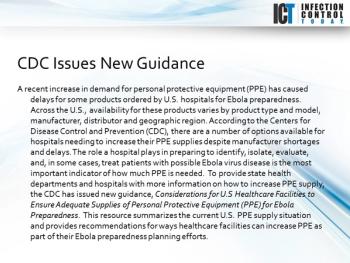
News





A group of University of Delaware students and researchers spent New Year’s in an unconventional way -- installing sanitation systems in India. A team of researchers led by Steven K. Dentel, professor of civil and environmental engineering, has been working for several years on a breathable fabric that can be used to line pit toilets and other basic sanitary facilities in developing nations.











Sometimes the most commonly used tools for stopping infections are not quite enough to combat the ongoing struggle against hospital-acquired infections. As outlined in the recent Consumer Reports article, “Deadly hospital infections are still too common,” prevention measures such as hand hygiene, wound care and limiting use of central lines and urinary catheters are hugely important. But infection control can and should go far beyond these steps. One million Americans suffer from hospital-acquired infections each year – with a mortality rate of 100,000 per year and a price tag many times that, healthcare facilities must take advantage of every available tool to control and reduce the spread of disease.












